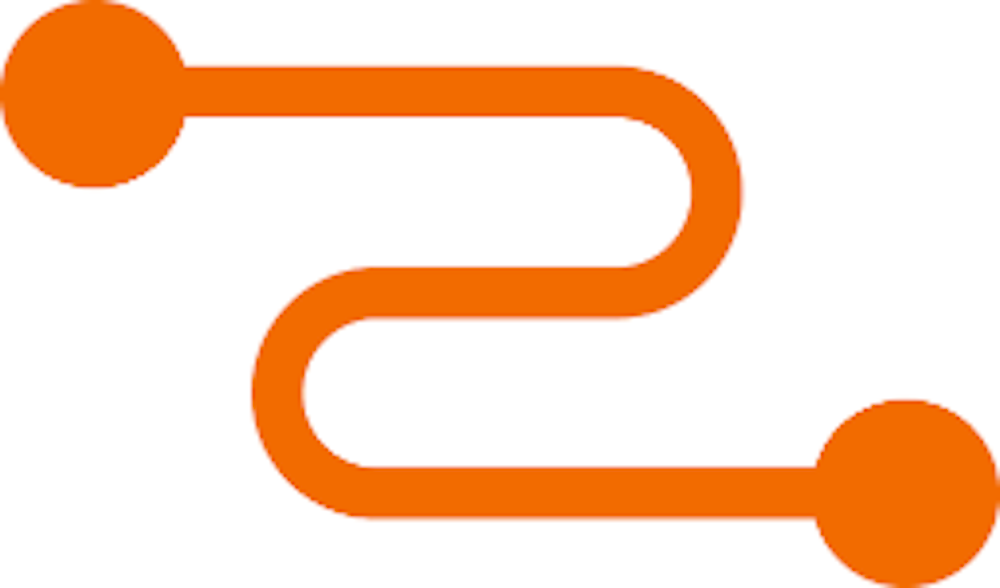TL;DR: The best JavaScript GraphQL client libraries are:
GraphQL is an API query language that enhanced the way data can be retrieved from a server. Because of its flexibility and declarative nature, it enables you to request exactly the data you need from the server, avoiding over-fetching and under-fetching issues. This approach to data retrieval is so popular that dozens of GraphQL client JavaScript libraries have sprung up in recent years.
In this comparison guide, you will see what a GraphQL JavaScript client is, what features it should offer, and what are the best options available.
Let's dive in!
What Is a JavaScript GraphQL Client?
A JavaScript GraphQL client is a library to interact with GraphQL endpoints. Specifically, it allows you to make GraphQL requests, serving as an interface between your JavaScript application and the GraphQL server.
The more advanced GraphQL client JavaScript libraries can not only perform GraphQL HTTP requests but also offer other useful features, such as:
Caching: Store retrieved data locally to avoid running the same query twice, improving performance and reducing network requests.
Pagination: Support for paginated queries, helping you retrieve data in smaller chunks via GraphQL.
Deduplication: Automatic removal of duplicate GraphQL queries to optimize network traffic.
Batching: Ability to batch multiple GraphQL requests into a single network request to minimize latency and improve efficiency.
Subscriptions: Support for GraphQL subscriptions to receive real-time updates from the server.
Refetching: Ability to refetch data from the server to update the cache or fetch fresh data.
Persisted queries: Store GraphQL queries on the server and reference them by a unique identifier to reduce payload size and improve security.
There are dozens of GraphQL clients in JavaScript, and selecting the right one is not easy. Explore the top ones in the next section!
Best GraphQL Clients in JavaScript and Node.js
Let’s now see a list of some of the best JavaScript GraphQL clients. The aspects that will be considered during the comparison are the main features and benefits provided by the tool, its major drawbacks, and its community. These should be enough to help you choose the GraphQL client that best fits your needs.
For a complete list of GraphQL clients for JavaScript and Node.js, check out the official GraphQL site.
Time to dig into the comparison of GraphQL clients!
Apollo Client

Apollo Client is one of the most popular GraphQL client JavaScript libraries thanks to its large community and vast set of features. As a comprehensive state management library that integrates with most frontend frameworks, it enables you to fetch, cache, and modify application data via GraphQL, automatically updating the UI accordingly.
👍 Pros:
Complete tool that covers most use cases.
Native TypeScript support, as it is written in TypeScript.
Support for normalized cache to skip network requests when data is already available locally.
Native integration with most frontend libraries and frameworks, including React, Angular, Vue, Svelte, Solid.js, Ember, and Meteor.
Support for GraphQL subscriptions, query batching, refetching, persistent queries, and deduplication.
Comes with a dedicated Chrome extension to make debugging easier.
Offers a Visual Studio Code extension for a better developer experience.
Thousands of GraphQL developers both on GitHub and a dedicated community forum.
👎 Cons:
Mastering all features available takes time and may not be easy, especially for beginners.
Heavy library that brings in 14 extra dependencies.
May require additional configurations on Node.js.
🔗 Links:
Repository: GitHub
npm:
@apollo/client
📈 Stats:
Weekly npm downloads: 2.5M
GitHub stars: 19.1k
Bundle size: 167.9 kB
Average new release time: ~1 month
urql

urql is a versatile and highly customizable JavaScript GraphQL client that supports both frontend and backend applications. It is designed to be easy for GraphQL beginners, while also offering more advanced features for complex applications. urql prioritizes usability and adaptability.
👍 Pros:
Lightweight library with only 2 dependencies.
Simple and intuitive syntax.
Developed in TypeScript.
Native TypeScript support.
Comes with dedicated framework bindings—meaning urql, @urql/preact, @urql/svelte, and @urql/vue—for React, Preact, Svelte, and Vue integrations, respectively.
Support for caching, pagination, persisted queries, and subscriptions.
Native Node.js support.
Offers a Chrome extension for simplifying debugging.
👎 Cons:
Does not support deduplication and batching.
Not the largest community.
🔗 Links:
Repository: GitHub
npm: @urql/core
📈 Stats:
Weekly npm downloads: 800k
GitHub stars: 8.3k
Bundle size: 32.7 kB
Average new release time: ~3 months
graphql-request
graphql-request is a minimal JavaScript GraphQL client supporting both Node.js and browsers. It is probably the simplest and most lightweight GraphQL client in JavaScript, providing no particular feature, but representing a great option for simple scripts and frontend applications.graphql-request's main benefit is that it allows you to make a GraphQL request with just a few lines of code:
import { request, gql } from "graphql-request"
// define the GraphQL queryconst document = gql` { articles { id title subtitle } }`
// make the GraphQL requestconst response = await request("<YOUR_GRAPHQL_ENDPOINT>", document)Notice how straightforward and readable this code is. There are no specific objects, configurations, or intricacies there.
👍 Pros:
Supports both browsers and Node.js.
Extremely lightweight, with only 2 dependencies.
Large and strong community of users.
Intuitive Promise-based API for making GraphQL requests.
First-class TypeScript support.
👎 Cons:
No advanced features, from caching to pagination.
No specific features, functions, or components for any frontend framework.
No real dedicated documentation, but only a short README.md file.
No Chrome or Visual Studio Code extension.
Slow releases.
🔗 Links:
Repository: GitHub
npm:
graphql-request
📈 Stats:
Weekly npm downloads: 3M
GitHub stars: 5.6k
Bundle size: 19.6 kB
Average new release time: ~1 year
Relay

Relay is a fully-featured GraphQL client JavaScript library developed by Meta for React. As a complete JavaScript framework, it provides everything you need to build data-driven React applications that connect to GraphQL servers. This makes Relay one of the best tools to deal with GraphQL in React.
👍 Pros:
Developed and maintained by Meta.
A complete framework for data fetching and management via GraphQL in React.
React hooks-based APIs for fetching data, loading data with fragments, and dealing with pagination, refetching, mutations, and subscriptions.
Provides high-order React components for data handling.
Custom Visual Studio Code extension for easier development.
A dedicated Chrome extension for debugging.
TypeScript declarations available in
@types/react-relay.Support for batching via the react-relay-network-modern middleware.
👎 Cons:
Very opinionated on the frontend, supporting only React and React Native.
Works only with servers that follow the Relay GraphQL server specifications.
Does not support Node.js.
Not the most lightweight library.
Developed in JavaScript.
Steep learning curve.
🔗 Links:
Repository: GitHub
npm:
react-relay
📈 Stats:
Weekly npm downloads: 104k
GitHub stars: 18.1k
Bundle size: 221.9 kB
Average new release time: ~1 year
graphql-hooks
graphql-hooks is a hooks-first JavaScript GraphQL client for React. It represents a good alternative to Apollo hooks due to its concise API and light package size. Some of the most useful hooks for GraphQL operations it provides are useQuery, useMutation, and useSubscription.
👍 Pros:
Minimal hooks-first API for handling GraphQL requests in React.
Support for SSR (Server-Side Rendering).
Tiny bundle with only a few extra dependencies.
Extensible via plugins.
Developed in TypeScript.
Supports caching via the
graphql-hooks-memcacheplugin.Easy data loading and error handling in the UI.
Support for persisted queries, refetching, and GraphQL subscriptions.
👎 Cons:
Frontend library that works only in React.
No built-in features for query pagination.
Not the largest community of users.
Links:
Repository: GitHub
npm:
graphql-hooks
📈 Stats:
Weekly npm downloads: 17k
GitHub stars: 1.9k
Bundle size: 18.8 kB
Average new release time: ~2 months
Choose the Right GraphQL JavaScript Client for Your Project
When comparing technologies, there is no better choice in absolute terms. The GraphQL client JavaScript library you should adopt is the one that best suits the specific needs of your projects.
To make an informed decision, consider the comparison table below:
| Bundle Size | Community | Learning Curve | TypeScript Support | Features | Node.js Support | Integrations with Frontend Frameworks | |
|---|---|---|---|---|---|---|---|
| Apollo Client | Heavy | Large | Steep | Native | Pagination, caching, persisted queries, refetching, batching, deduplication | With extra configuration | React, Angular, Vue, Svelte, Solid.js, Ember, Meteor |
| urql | Lightweight | Medium | Low | Native | Pagination, caching, persisted queries, subscriptions | ✅ | React, Preact, Svelte, Vue |
| graphql-request | Extremely lightweight | Large | Low | Native | None | ✅ | None |
| Relay | Heavy | Medium/Large | Steep | Via external bindings | Pagination, refetching, subscriptions, React hooks and components | ❌ | React and React Native only |
| graphql-hooks | Extremely lightweight | Small | Steep | Native | Caching, persisted queries, refetching, subscriptions, React hooks | ❌ | React only |
With a simple glance, you can now tell that:
Apollo Client is the library that covers more scenarios and applications.
urqlis great for making GraphQL requests on the browser or the server when you want to avoid large bundles.graphql-requestis the best GraphQL JavaScript client for small frontend projects or Node.js scripts.Relay is the optimal solution for developing GraphQL-based interactive React applications.
graphql-hooksrepresents a good compromise between functionality and bundle size when it comes to dealing with GraphQL in React.
Fantastic! You are now a JavaScript GraphQL client expert!
Conclusion
In this article, you dug into the best GraphQL clients available in JavaScript. In particular, you understood what a GraphQL client JavaScript library is, how it works, and what features it offers to make data management easier.
Looking for an online service to handle content and deliver it via GraphQL? Try DatoCMS, the GraphQL CMS you were looking for!
Enable editors and marketers to create great content in an intuitive, customizable, feature-rich platform and expose it to your frontends via the GraphQL-based DatoCMS Content Delivery API. Call these endpoints with any GraphQL JavaScript client and start retrieving data in your projects.
Thanks for reading! We hope that you found this article helpful. Feel free to reach out to us with any questions, comments, or suggestions. Consider also joining our community on Slack.
